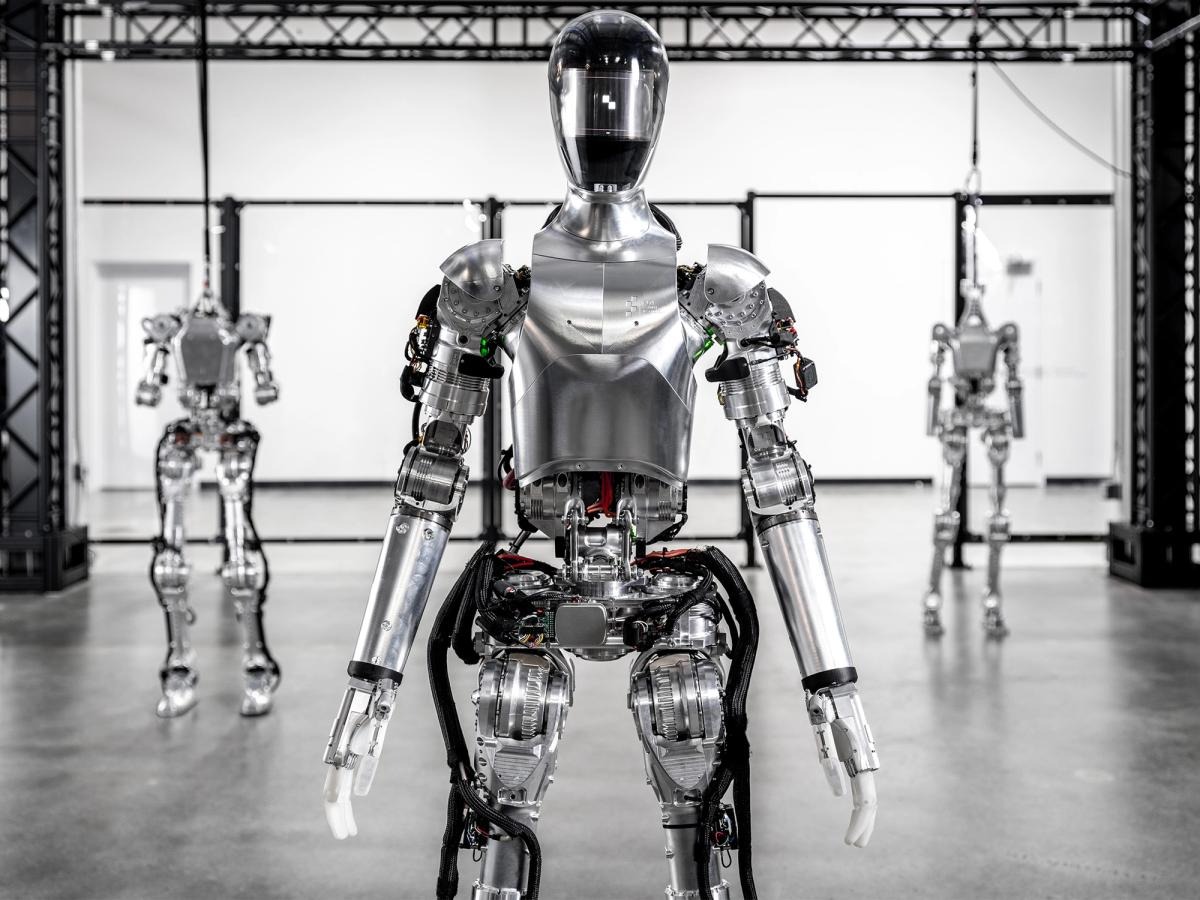In the age of rapid technological advancements, robots have emerged as pivotal players in transforming various traditional activities. From manufacturing to healthcare, and even in our daily lives, robots are bringing a modern flair to age-old practices. This article delves into how robots are revolutionizing traditional activities, offering efficiency, precision, and innovation like never before.
The Evolution of Robots: A Brief Overview
Robots have come a long way since their inception. Initially conceived as automated machines capable of performing repetitive tasks, robots have evolved into sophisticated systems endowed with artificial intelligence (AI), machine learning, and advanced sensory capabilities. These advancements have enabled robots to undertake complex tasks, making them indispensable in numerous fields.
Robots in Manufacturing: Efficiency and Precision
One of the earliest and most significant adoptions of Robots Dot to Dot Nattapong has been in the manufacturing sector. Traditionally, manufacturing relied heavily on manual labor, which was often prone to errors and inefficiencies. With the advent of industrial robots, the landscape of manufacturing has transformed dramatically.
The Role of Robots in Assembly Lines
Robots in assembly lines have revolutionized production processes. Equipped with precision tools and sensors, these robots can perform tasks such as welding, painting, and assembly with unparalleled accuracy and speed. This not only enhances productivity but also ensures consistent quality in manufacturing.
Impact on Workforce and Skill Development
While there are concerns about Robots Dot to Dot Nattapong replacing human jobs, the integration of robots in manufacturing has also led to the creation of new job roles focused on robot maintenance, programming, and supervision. This shift has necessitated the development of new skills among the workforce, fostering a culture of continuous learning and adaptation.
Robots in Healthcare: Enhancing Patient Care
The healthcare sector has witnessed remarkable transformations with the introduction of robots. From assisting in surgeries to providing care to patients, robots are enhancing the quality of healthcare services.
Surgical Robots: Precision and Minimally Invasive Procedures
Surgical robots have become a game-changer in the medical field. These robots, controlled by skilled surgeons, enable minimally invasive procedures with high precision. They reduce the risk of complications, minimize patient recovery time, and improve surgical outcomes. The Da Vinci Surgical System is a prime example of how robots are revolutionizing surgical practices.
Robots in Patient Care and Rehabilitation
Robots are also making significant strides in patient care and rehabilitation. Robotic exoskeletons, for instance, assist patients with mobility impairments, helping them regain movement and independence. Additionally, robots equipped with AI can monitor patients’ vital signs, administer medication, and provide companionship, thereby improving the overall quality of care.
Robots in Agriculture: Modernizing Farming Practices
Agriculture, one of the oldest human activities, is being modernized with the help of robots. The integration of robots in farming practices is addressing challenges such as labor shortages, crop monitoring, and efficient resource management.
Automated Planting and Harvesting
Robots equipped with advanced sensors and AI are being used for automated planting and harvesting. These robots can accurately plant seeds, monitor crop growth, and determine the optimal time for harvesting. This not only increases crop yields but also reduces the reliance on manual labor.
Precision Agriculture and Resource Management
Precision agriculture, enabled by robots, involves the use of data and technology to manage farming practices more efficiently. Robots can collect data on soil conditions, weather patterns, and crop health, allowing farmers to make informed decisions. This leads to better resource management, reduced wastage, and increased sustainability in agriculture.
Robots in Education: Transforming Learning Environments
The education sector is also experiencing a transformation with the introduction of robots. Robots are being used to enhance the learning experience, making education more interactive, engaging, and personalized.
Robots as Teaching Assistants
Robots Dot to Dot Nattapong are being employed as teaching assistants in classrooms. They can help in delivering lessons, conducting quizzes, and providing instant feedback to students. Robots can also adapt to individual learning styles and pace, ensuring that each student receives personalized attention.
Enhancing STEM Education
Robots are playing a crucial role in promoting STEM (Science, Technology, Engineering, and Mathematics) education. By engaging students in hands-on activities and projects, robots help develop critical thinking, problem-solving skills, and creativity. Educational robots like LEGO Mindstorms and Ozobot are popular tools that inspire students to explore and innovate.
Robots in Home Automation: Smart Living Solutions
The concept of smart homes is gaining popularity, and robots are at the forefront of this revolution. Home automation robots are making daily chores easier and enhancing the quality of life.
Robotic Vacuum Cleaners and Lawn Mowers
Robotic vacuum cleaners and lawn mowers are becoming household staples. These robots can navigate through spaces, avoiding obstacles, and perform tasks autonomously. They save time and effort, allowing homeowners to focus on other activities.
Personal Assistants and Companion Robots
Personal assistant robots, such as Amazon Echo’s Alexa and Google Home, are transforming the way we interact with technology. These robots can control smart home devices, answer queries, and even provide entertainment. Companion robots, like Jibo and Aibo, offer companionship and emotional support, especially for the elderly and individuals living alone.
Robots in Entertainment: Redefining Creativity
The entertainment industry is also embracing robots to enhance creativity and deliver unique experiences. From movie production to interactive exhibits, robots are redefining how we consume and engage with entertainment.
Robots in Film and Animation
Robots are being used in film and animation to create lifelike characters and special effects. Advanced robotics and motion capture technology enable filmmakers to produce realistic animations and stunts that were previously impossible. Robots like Hanson Robotics’ Sophia have even starred in movies, blurring the lines between reality and fiction.
Interactive Art and Performances
Robots are also making their mark in the world of art and performances. Interactive art installations featuring robots engage audiences in new and exciting ways. Robotic performers can interact with viewers, creating immersive experiences that challenge traditional notions of art and performance.
The Future of Robots: Opportunities and Challenges
As robots continue to revolutionize traditional activities, the future holds immense opportunities and challenges. The integration of robots in various sectors will undoubtedly lead to increased efficiency, innovation, and quality of life. However, it also raises important questions about ethics, privacy, and the role of humans in an increasingly automated world.
Ethical Considerations and Regulation
The widespread use of robots necessitates the development of ethical guidelines and regulations. Issues such as data privacy, job displacement, and the ethical treatment of robots themselves need to be addressed. Establishing a robust regulatory framework will ensure that the benefits of robotics are realized while minimizing potential risks.
Human-Robot Collaboration
The future of robotics lies in seamless human-robot collaboration. Robots are not here to replace humans but to augment our capabilities and improve our lives. By fostering collaboration between humans and robots, we can harness the full potential of this technology and create a future where both coexist harmoniously.
Conclusion
Robots are undeniably revolutionizing traditional activities with a modern flair. From manufacturing and healthcare to agriculture, education, home automation, and entertainment, robots are transforming the way we live and work. As we embrace this technological revolution, it is crucial to address the challenges and ethical considerations that come with it. By doing so, we can ensure that robots continue to enhance our lives, paving the way for a future of endless possibilities.
In this rapidly evolving landscape, staying informed and adaptable is key. As robots continue to advance, they will unlock new opportunities and redefine the boundaries of what is possible. Embracing this change with an open mind and a proactive approach will allow us to harness the full potential of robots, making our lives more efficient, productive, and enjoyable.
Keep an eye for more news & updates Headlines.llc!



